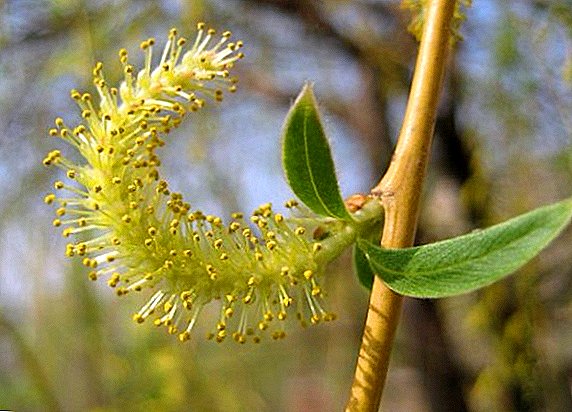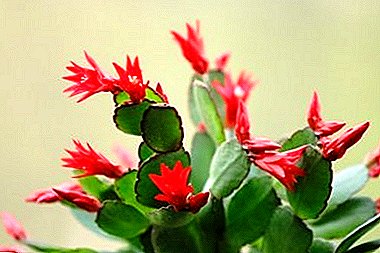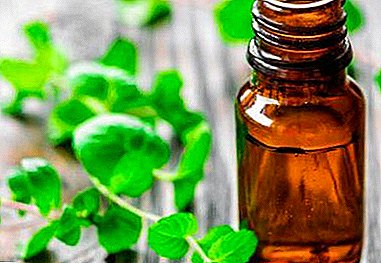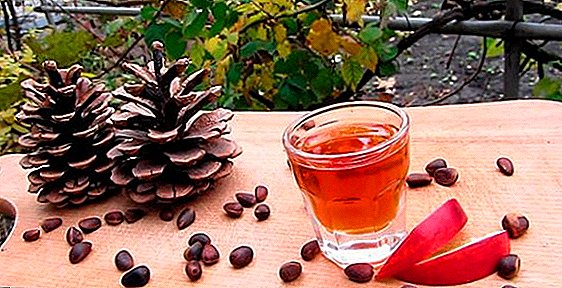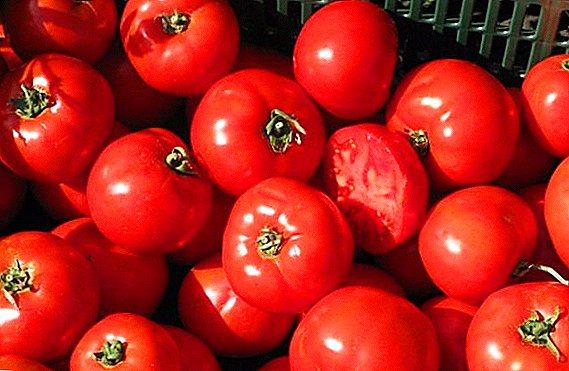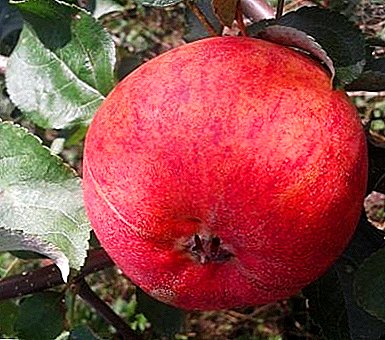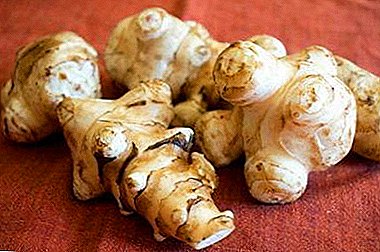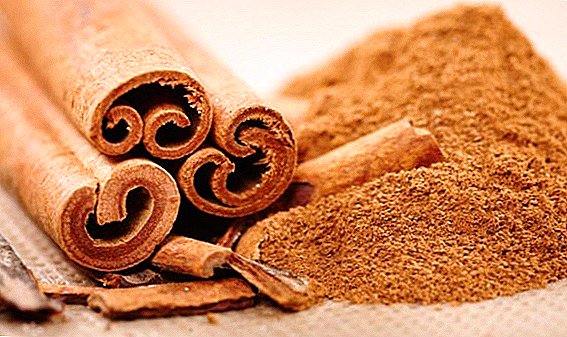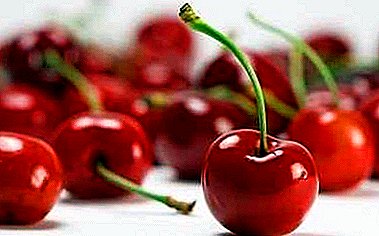
Cherry should be planted in your garden already only to enjoy the beautiful white garden in the spring.
And if you want to not only admire, but also enjoy the delicious berries, then you need to pay attention to the varieties are self-fruited.
They are not so many among the cherries.
Suitable for this parameter and for many others will be a wonderful variety for Nechernozemie - cherry Memory of Enikeeva, a full description of the variety and photo of the fruit is given later in the article.
Breeding history and breeding region
 This is the result of the collective work of five employees. Institute of Horticulture GNSTU VSTISP, located in Moscow.
This is the result of the collective work of five employees. Institute of Horticulture GNSTU VSTISP, located in Moscow.
The authors are a doctor of biological sciences, a specialist in the study of stone fruit cultures. H.K.Yenikeevagronomist-pomolog S.N. Satarov, A.I. Evstratov, V.S.Simonov, A.M.Mikheev.
Got it by crossing varieties Zhukovskaya with korinkoy. In 1995, the obtained breeding material was submitted for state testing.
In 2001, it was approved for use in Bryansk, Moscow, Ryazan, Kaluga, Vladimir, Ivanovo, Smolensk, Tula regions.
Such varieties as Morozovka, Zhivitsa, Turgenevka, Kharitonovskaya, Shokoladnitsa are successfully growing in this region.
Appearance of cherry in memory of Enikeeva
Consider separately the appearance of the tree and fruit.
Tree
Tree reaches in height to three meters. Spherical srednegusty krone has a wilted shape. The level of leaf cover is average. Shtamb possesses dark gray bark freaked out along small cracks. Vertical shoot growth. Chechevichki almost absent. Buds deviate from the shoots weakly.
The rather large, dark-green, non-glossy leaves have an inverted ovoid shape with a very pointed end. The edge is doubly gangulate.
 Petioles are medium in length and stained saturated.
Petioles are medium in length and stained saturated.
The inflorescences have a small amount of white flowers with a spacious arrangement. Small flat rim.
Slightly crimped petals surround a variety of short stamens with a short pestle. Flower cup has the shape of a glass. Fruits are formed most often on the bouquet branches.
Fruit
By the size of the berries can be considered large, their weight reaches 4.7-5 grams. The form is oval with a wide core of a dark red hue.
Large berries are also varieties Mayak, Youth and Black Large.
Cherry has the same color of pulp with an average density. Berry juice of the same color.
Long stem of medium width. The attachment to the fetus is almost dry. There are no paired appendages in the lower part of the leaf.
Stone has an oval shape and big size. Its weight ranges from 0.35 to 0.4 grams. As a percentage, it is 0.3% of the berry's own weight and 8% of the total volume.
A photo






Characteristics of a variety
At a grade is present self-fertility. One tree is able to give 8-10 kg of cherries, while the maximum - 12-15 kg. At the age of 3-4 years old trees begin to bear fruit. Fruit ripening occurs at the same time.
High yields are also demonstrated by the varieties Shalunya, Kharitonovskaya, Chernokorka and Podbelskaya.
Refers to medium early ripening varieties, midsummer, in some areas already on June 20.
Winter hardiness rates are such that it is recommended to plant this cherry in the south of the Non-Black Earth region and central black earth regions.
The same age, Fairy, Tsarevna and Ashinskaya are distinguished by good winter resistance.
 Average resistance to frost, like shoots and buds, flowers. According to gardeners, the winter tolerates well.
Average resistance to frost, like shoots and buds, flowers. According to gardeners, the winter tolerates well.
In relation to drought and heat appear average sustainability.
Pronounced dessert taste. Evaluate taste properties 4.8-5 points. Berry contains 10% sugar and per 100 grams of fruit 13.5 mg ascorbic acid.
Application is universal. Various processing of the ripened fruits is possible. Universal cherry variety Volochaevka, Moscow Griot and Dessert Morozova.
Planting and care
So that the cherry does not lose its sugar content, it should be planted in a well-lit place, preferably near the building. The fence or structure will increase resistance to frost. Before the groundwater need at least 1.5-2 meters, as the cherry does not like water stagnation.
Saplings better to plant in spring, the best month is April. Landing is also possible. until September.
Depthing is not recommended: root neck should be left above the ground by 5-7 cm.
 During the planting of a seedling it would be good to put it in a prepared pit. humus, superphosphate and potassium chloride.
During the planting of a seedling it would be good to put it in a prepared pit. humus, superphosphate and potassium chloride.
Every year fertilizers are applied on sandy soils.
Per square meter can be used 15-20 g of ammonium nitrate or 30 -40 g of superphosphate.
Once within 5-6 years you need to make lime under the cherry. For light soils - 300 g, for heavy - 500 g
To increase the yield of even self-fruited cherries, it is desirable to have a pollinator.
You can propagate by grafting, in particular by budding.
Cherry gives a large amount of basal shoots that take a lot of nutrients from the tree. It is recommended to cut it as close to the ground as possible.
Diseases and pests
 Ability to defeat coccomycosis (fungal disease) of leaves and fruits during an epidemic (epiphytotics) is estimated at 2.5 - 3 points. This is an average figure. Less common is monoliosis.
Ability to defeat coccomycosis (fungal disease) of leaves and fruits during an epidemic (epiphytotics) is estimated at 2.5 - 3 points. This is an average figure. Less common is monoliosis.
For the prevention of these diseases recommended to spray early in the spring before the swelling of the kidneys blue vitriol.
A 3% solution is made. Other preparations containing copper may also be used.
When the buds have appeared, they are used for spraying horus. And after flowering - drugs Swift or Strobe.
Branches affected by the disease should be cut off by 20 centimeters alive and burned.
Good resistance to fungal diseases are demonstrated by the varieties Morozovka, Podbelskaya and Vianok.
Sometimes affected by pest name cherry weevil Spraying is also used for treatment.
From rodents need to protect the trunk, using a special mesh or nylon panty hoses.
Your choice is to stop amateur gardeners on the cherry in memory of Enikeeva due to the high yield of this variety. The undoubted advantage is the excellent taste and size of the berries.


